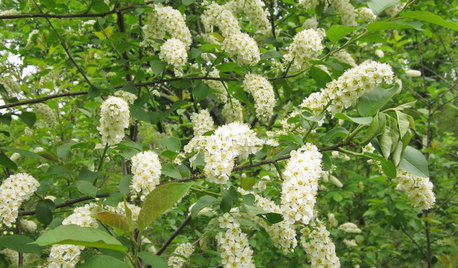Should I get rid of this Rhamnus cathartica?
dash_2006
10 years ago
Related Stories

TREESNative Plant Alternatives to Invasive Common Buckthorn
Learn how to identify and control this aggressive plant, and what to grow in its place
Full Story
GARDENING GUIDESPrunus Virginiana Thrives Under Deciduous Trees
Plant chokecherry for showy white flowers favored by native bees in spring, and to provide nesting habitat and food for birds
Full Story









Embothrium
corkball
Related Professionals
Erie Landscape Architects & Landscape Designers · Signal Hill Landscape Architects & Landscape Designers · Willowick Landscape Architects & Landscape Designers · Buford Landscape Contractors · Peabody Landscape Contractors · Fort Myers Landscape Contractors · Kailua Landscape Contractors · Ronkonkoma Landscape Contractors · Dale City Siding & Exteriors · North Hollywood Siding & Exteriors · Detroit Decks, Patios & Outdoor Enclosures · Glendale Decks, Patios & Outdoor Enclosures · Midlothian Decks, Patios & Outdoor Enclosures · Saint Louis Park Decks, Patios & Outdoor Enclosures · Surfside Decks, Patios & Outdoor Enclosuresterrene
dash_2006Original Author
brandon7 TN_zone7
terrene
terrene
dash_2006Original Author
terrene
bengz6westmd
dash_2006Original Author
terrene
mikebotann
dash_2006Original Author
mikebotann
dash_2006Original Author
mikebotann
dash_2006Original Author